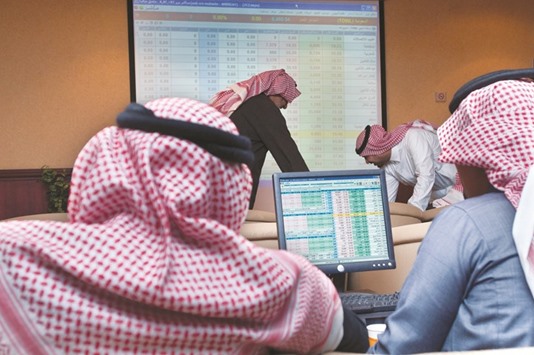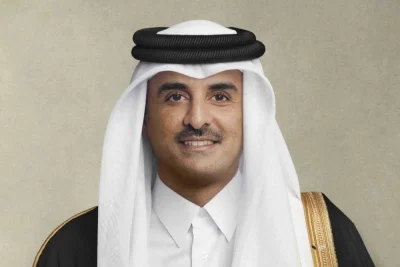Saudi Arabia’s index firmed yesterday as blue chips resumed their climb and the positive mood flowed into other Gulf bourses, carrying them higher.
Egypt’s market edged up, holding near an 8-year peak as foreign funds remained aggressive buyers.
Riyadh’s index bounced 3.0% to 6,796 points, closing 93 points over technical resistance at the July peak of 6,703 points.
Turnover was almost double that of Tuesday. Some blue chips continued to attract funds, with the top telecommunication operator Saudi Telecom Co (STC) jumping 4.6%.
Riyad Capital said in note that STC has maintained its dividend policy of 1 riyal per quarter and they believe it has the ability to increase dividend payout because of its sound financials and strong cash position.
“The company has 20bn riyals in liquid assets consisting of cash and short term investment, three times its total debt.”
Some of the large-cap petrochemical producers also ended on a strong footing, despite now trading at a slight premium to the their estimated fair values.
Bellwether Saudi Basic Industries climbed 4.1% to 90 riyals; the average fair value according to Thomson Reuters data is 88.68 riyals.
Banking shares, which succumbed to profit taking in recent days, firmed.
All of the 12 listed lenders gained with National Commercial Bank closing 4.7% higher.
Many analysts believe that since there has been a shift in both the domestic and global macro environment, investors are betting that banks will be able to recover some of their profitability, with some banks now in a position to potentially increase their earnings next year.
Domestically, the interbank lending rates have come down significantly since the sovereign international bond sale last month; 3 month SAIBOR is at 2.1%, after hitting a seven-year high of 2.386% in October.
Goldman Sachs said in a note: “Saudi banks remain positively geared to higher global rates given high current account balances, predominantly a corporate loan book mix and monetary policy which closely tracks the US. As a result, interest rate tightening by the Fed should translate into a positive net interest margin uplift for the banks.”
Dubai’s main index added 1.8%, with the momentum building in the final hour of trade. Small and mid-sized shares, usually traded by local investors, were chief gainers with builder Arabtec surging by its 15% daily limit in heavy trade.
Dubai Financial Market, the only listed exchange in the Gulf, jumped 6.2%. Abu Dhabi’s index rose 1.0% as Dana Gas added 1.8%.
Lenders that are set to be merged at the start of 2017 gained with First Gulf Bank adding 2.2% and National Bank of Abu Dhabi closing 1.6% higher.
Cairo’s index of the most actively traded shares edged up 0.3%, climbing back near an 8-year peak, but the number of trades fell by a third from the previous session.
The index has now climbed 35.5% since the central bank ditched the currency peg to the US dollar on November 3 and faces strong technical resistance at its record 2008 peak of 12,039 points.
Foreign funds remained net buyers of shares yesterday while local and regional traders cashed out, according to exchange data.
For a second day in a row, the broader index has outperformed, closing up 1.7%, suggesting that investors are preferring the less liquid names as an attractive bargain.
Heliopolis for Housing and Development soared 10% to 81.14 Egyptian pounds ($4.66) after the company announced a four-for-one stock split.
A stock split effectively lowers the share price and increases the number of traded shares.
Usually this does little to move prices as total market value is not impacted. But with a depreciating currency, lower share prices become more appealing to investors.
Elsewhere, Kuwait index edged up 0.4% to 5,536 points and Bahrain index added 0.3% to 1,188 points at the close yesterday.

Riyadh’s index bounced 3.0% to 6,796 points yesterday, closing 93 points over technical resistance at the July peak of 6,703 points


